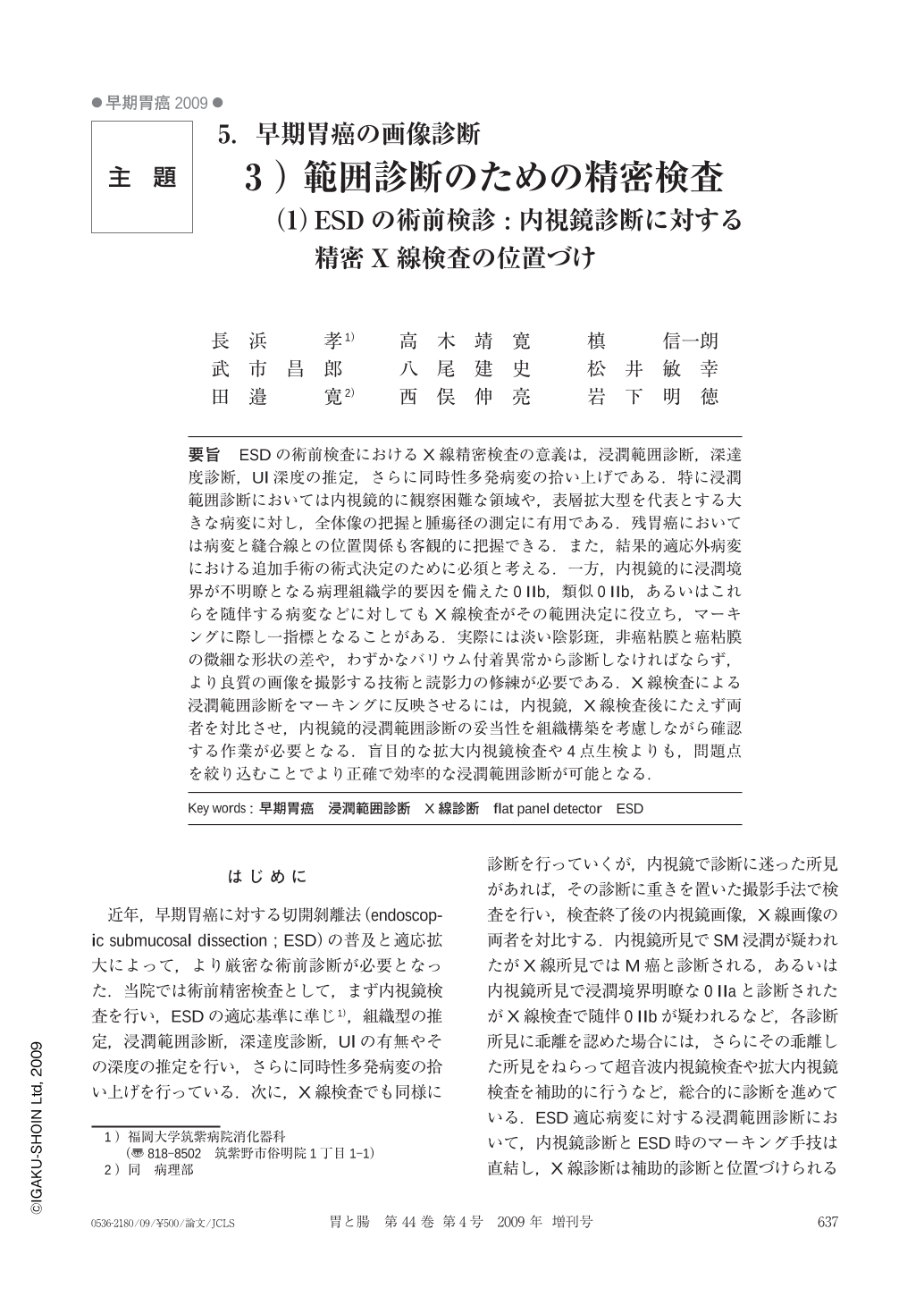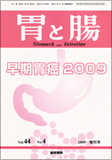Japanese
English
- 有料閲覧
- Abstract 文献概要
- 1ページ目 Look Inside
- 参考文献 Reference
- サイト内被引用 Cited by
要旨 ESDの術前検査におけるX線精密検査の意義は,浸潤範囲診断,深達度診断,Ul深度の推定,さらに同時性多発病変の拾い上げである.特に浸潤範囲診断においては内視鏡的に観察困難な領域や,表層拡大型を代表とする大きな病変に対し,全体像の把握と腫瘍径の測定に有用である.残胃癌においては病変と縫合線との位置関係も客観的に把握できる.また,結果的適応外病変における追加手術の術式決定のために必須と考える.一方,内視鏡的に浸潤境界が不明瞭となる病理組織学的要因を備えた0 IIb,類似0 IIb,あるいはこれらを随伴する病変などに対してもX線検査がその範囲決定に役立ち,マーキングに際し一指標となることがある.実際には淡い陰影斑,非癌粘膜と癌粘膜の微細な形状の差や,わずかなバリウム付着異常から診断しなければならず,より良質の画像を撮影する技術と読影力の修練が必要である.X線検査による浸潤範囲診断をマーキングに反映させるには,内視鏡,X線検査後にたえず両者を対比させ,内視鏡的浸潤範囲診断の妥当性を組織構築を考慮しながら確認する作業が必要となる.盲目的な拡大内視鏡検査や4点生検よりも,問題点を絞り込むことでより正確で効率的な浸潤範囲診断が可能となる.
The significance of a precise radiographic examination before performing endoscopic submucosal dissection(ESD)lies in diagnosis of the extent of invasion, diagnosis of depth of invasion, estimation of ulcer(UL)depth, and picking up other synchronous multiple lesions as well. When diagnosing extent of invasion, it is especially useful for determining the overall picture and measuring tumor diameter in large lesions that represent areas where observation is difficult endoscopically and in superficial spreading types. It also enables the positional relationship between the lesion and the suture line in residual stomach cancer to be determined objectively. In addition, we consider it to be essential for choosing additional surgical procedures for lesions that as a result of the radiographic examination are outside the indications. On the other hand, radiographic examinations are useful for determining extent in IIb-like lesions and associated IIb lesions that have histopathological factors that make the invasion boundary indistinct endoscopically, and it sometimes serves as an indicator when performing marking. Actually, it is necessary to make a diagnosis based on faint shadow plaques, minute differences in shape between non-cancerous mucosa and cancerous mucosa, and minor barium adherence abnormalities, and technology that acquires better quality images and training in image interpretation are needed. In order to reflect the radiographic diagnosis, in the marking, it takes work to contrast the two after endoscopy and the radiographic examination and to confirm the validity of endoscopic diagnosis of the extent of invasion while taking the tissue architecture into consideration. More accurate and efficient diagnosis of extent of invasion will become possible by narrowing down problem points than by blind magnified endoscopic examinations and 4-point biopsy.

Copyright © 2009, Igaku-Shoin Ltd. All rights reserved.


